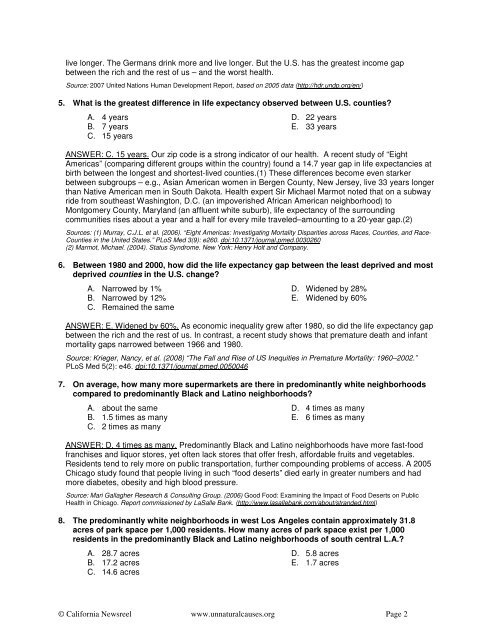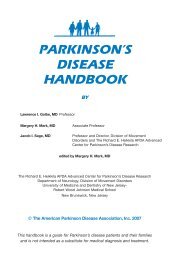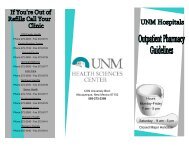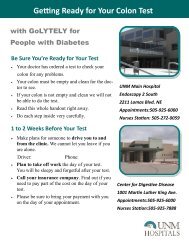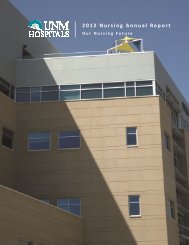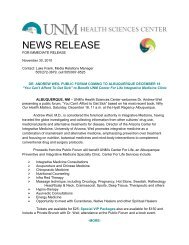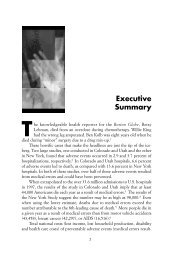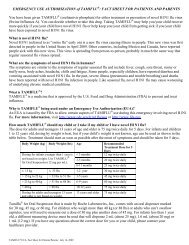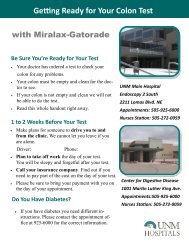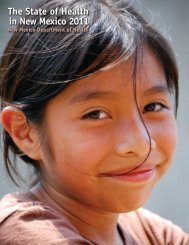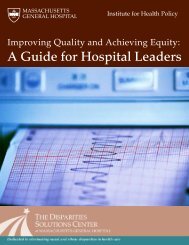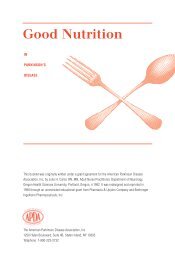Health Equity Quiz (pdf) - Unnatural Causes
Health Equity Quiz (pdf) - Unnatural Causes
Health Equity Quiz (pdf) - Unnatural Causes
Create successful ePaper yourself
Turn your PDF publications into a flip-book with our unique Google optimized e-Paper software.
live longer. The Germans drink more and live longer. But the U.S. has the greatest income gapbetween the rich and the rest of us – and the worst health.Source: 2007 United Nations Human Development Report, based on 2005 data (http://hdr.undp.org/en/)5. What is the greatest difference in life expectancy observed between U.S. counties?A. 4 yearsB. 7 yearsC. 15 yearsD. 22 yearsE. 33 yearsANSWER: C. 15 years. Our zip code is a strong indicator of our health. A recent study of “EightAmericas” (comparing different groups within the country) found a 14.7 year gap in life expectancies atbirth between the longest and shortest-lived counties.(1) These differences become even starkerbetween subgroups – e.g., Asian American women in Bergen County, New Jersey, live 33 years longerthan Native American men in South Dakota. <strong>Health</strong> expert Sir Michael Marmot noted that on a subwayride from southeast Washington, D.C. (an impoverished African American neighborhood) toMontgomery County, Maryland (an affluent white suburb), life expectancy of the surroundingcommunities rises about a year and a half for every mile traveled–amounting to a 20-year gap.(2)Sources: (1) Murray, C.J.L. et al. (2006). “Eight Americas: Investigating Mortality Disparities across Races, Counties, and Race-Counties in the United States.” PLoS Med 3(9): e260. doi:10.1371/journal.pmed.0030260(2) Marmot, Michael. (2004). Status Syndrome. New York: Henry Holt and Company.6. Between 1980 and 2000, how did the life expectancy gap between the least deprived and mostdeprived counties in the U.S. change?A. Narrowed by 1%B. Narrowed by 12%C. Remained the sameD. Widened by 28%E. Widened by 60%ANSWER: E. Widened by 60%. As economic inequality grew after 1980, so did the life expectancy gapbetween the rich and the rest of us. In contrast, a recent study shows that premature death and infantmortality gaps narrowed between 1966 and 1980.Source: Krieger, Nancy, et al. (2008) “The Fall and Rise of US Inequities in Premature Mortality: 1960–2002.”PLoS Med 5(2): e46. doi:10.1371/journal.pmed.00500467. On average, how many more supermarkets are there in predominantly white neighborhoodscompared to predominantly Black and Latino neighborhoods?A. about the sameB. 1.5 times as manyC. 2 times as manyD. 4 times as manyE. 6 times as manyANSWER: D. 4 times as many. Predominantly Black and Latino neighborhoods have more fast-foodfranchises and liquor stores, yet often lack stores that offer fresh, affordable fruits and vegetables.Residents tend to rely more on public transportation, further compounding problems of access. A 2005Chicago study found that people living in such “food deserts” died early in greater numbers and hadmore diabetes, obesity and high blood pressure.Source: Mari Gallagher Research & Consulting Group. (2006) Good Food: Examining the Impact of Food Deserts on Public<strong>Health</strong> in Chicago. Report commissioned by LaSalle Bank. (http://www.lasallebank.com/about/stranded.html)8. The predominantly white neighborhoods in west Los Angeles contain approximately 31.8acres of park space per 1,000 residents. How many acres of park space exist per 1,000residents in the predominantly Black and Latino neighborhoods of south central L.A.?A. 28.7 acresB. 17.2 acresC. 14.6 acresD. 5.8 acresE. 1.7 acres© California Newsreel www.unnaturalcauses.org Page 2


